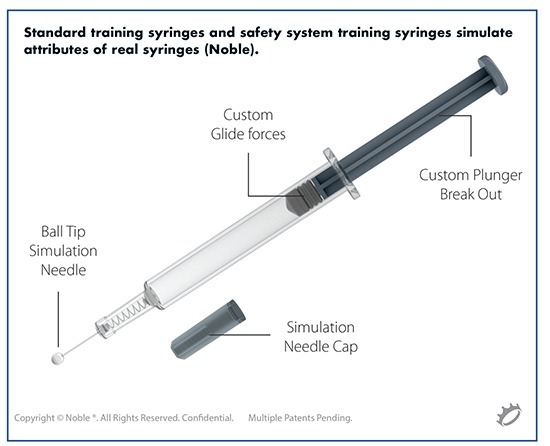Although there are many positive changes impacting self-injecting patients, there are also some challenges patients and other stakeholders face, including training decay from lengthy gaps between self-administration, forgetfulness of dosing regime, and fear of the actual injection sensation due to conditioning degradation, explains Joe Reynolds, Research Manager, Design & Engineering, Noble. “These factors could increase the risk of errors and contribute to lower adherence rates for self-injecting patient populations.”
To counteract some of these challenges, Noble continues to develop prefilled syringe trainers and patient onboarding platforms to help patients with initial device training, continuous training, and onboarding throughout disease management to counteract self-injection training decay, and ultimately improve adherence and health outcomes.
Some of the proprietary prefilled syringe training device enhancements at Noble include plunger resistance and breakout forces that simulate the actual prefilled syringe and drug viscosity, and needle insertion technologies simulating needle sensation and force – all with the objective of enhancing the patient onboarding experience.
“As pharmaceutical companies continue to develop innovative combination therapies, Noble continues to collaborate with pharmaceutical teams to improve patient onboarding and patient outcomes through true-to-form and function platforms, including safety and standard prefilled syringe trainers, Smart Injection Pads (wirelessly connected error-correcting injection training pads used for instructing, tracking, monitoring, and collecting data to assist in improving adherence), and autoinjector trainers,” he says.
Issue: May 2017, Posted Date: 5/2/2017
SPECIAL FEATURE – Prefilled Syringes & Parenteral Manufacturing: A Rise in Biologics & Improved Technology Give Pharma Reasons to Consider Parenteral Delivery

